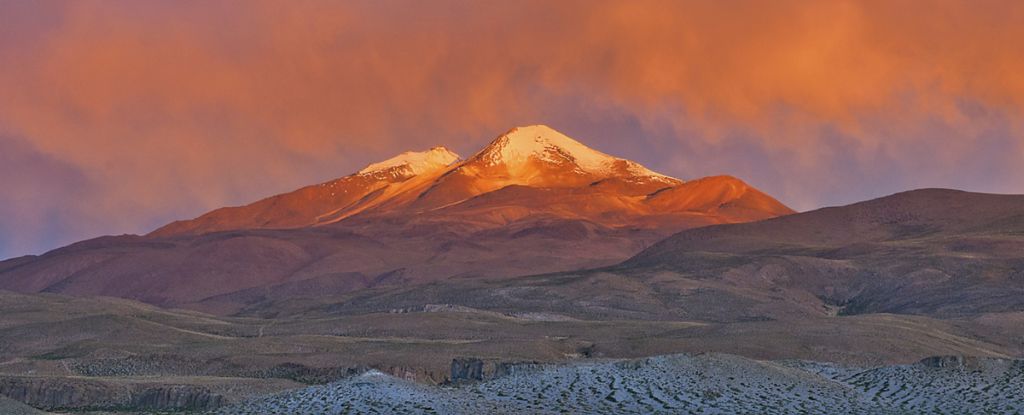'Zombie' Volcano in Bolivia Appears to Be Stirring Deep Underground

A volcano that has been dormant for more than 250,000 years might not be as dead and gone as it looks. Beneath the tall peaks of Uturuncu in the Sur Lípez Province of Bolivia, scientists have figured out what is happening in the magma chambers deep underground, as materials slowly make their way up towards the surface. "When people look at volcanoes, they're like, 'Oh, if it's not going to erupt, we're not interested in it.' But actually volcanoes that look dead on the surface are not dead underneath," says geophysicist Matthew Pritchard of Cornell University. "There are still processes going on. And the processes in Uturuncu are particularly interesting because they're telling us about the liquids and the gases that are moving through there that might become, or maybe even today are, a reservoir of minerals that could be useful for technology." Uturuncu is kind of a zombie volcano. It's considered dormant because its last eruption was a quarter of a million years ago… but even so, it shows signs of life. Over the last few decades, it has been recorded rumbling with seismic activity, and spewing out plumes of gas – not the sort of activity that is particularly reassuring from a volcano. All this activity has caused the landscape around Uturuncu to deform into what scientists describe as a sombrero-like shape, with the peak of the volcano in the center, and the surrounding land sinking down to a lower elevation. Any signs of activity from a large volcano warrant investigation; humans, particularly those who live nearby, need to know if they are in any danger from an imminent explosive eruption. So an international team of scientists used a range of techniques to figure out what's going on beneath Uturuncu, and if we need to be concerned. The short version is good news: we have nothing to worry about. Uturuncu may not be completely dead, but it's not likely to blow its stack any time soon. The researchers used data from more than 1,700 earthquakes in the surrounding area to map the plumbing system beneath the volcano. This works a bit like magnetic resonance imaging, or X-ray imaging. After a quake, the acoustic waves that bounce around through Earth change according to the composition of the material they travel through, allowing scientists to map the different regions of solid minerals, hollow chambers, and fluids. They combined this with previous geophysical imaging data and petrochemical analysis, and performed rock physics modeling to reconstruct the activity occurring beneath the ground. Their results show a shallow hydrothermal system beneath the volcano, with hot water migrating upwards towards the surface. Beneath the crater is a reservoir where gas is accumulating, pushing the surface upwards at a rate of around 1 centimeter (0.4 inches) per year. This is information that could help scientists track down deposits of minerals such as copper, and study how they form. "The idea is that fluids are flowing through molten rock and they pick up some minerals on their way, and then they take them somewhere and deposit them," Pritchard explains. "Even though we're not really worried about this particular volcano erupting in the next few years, we can sort of see in real time the processes of this happening. Clearly there is activity underground that may be even, at some point, economically useful." The research also demonstrates how combining multiple datasets and techniques can reveal the hidden activity of seemingly inactive volcanic systems, to better determine the threat level they pose, and how they can persist even over eons. "Our analysis demonstrates the potential of integrating petrophysical and geophysical data in resolving the architecture of magmatic-hydrothermal systems in subvolcanic crust, which is critical for volcanic hazard assessment," the researchers write in their paper. "A better understanding of the underlying causes of the volcanic unrest and the physics of magmatic and volcanic processes requires multidisciplinary studies, as shown in this research at Uturuncu volcano." The research has been published in the Proceedings of the National Academy of Sciences.

















